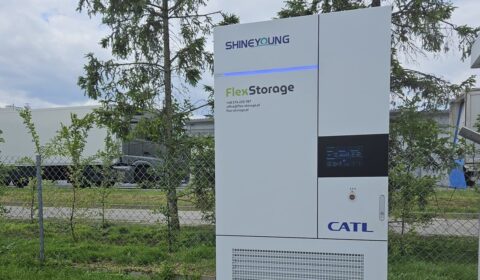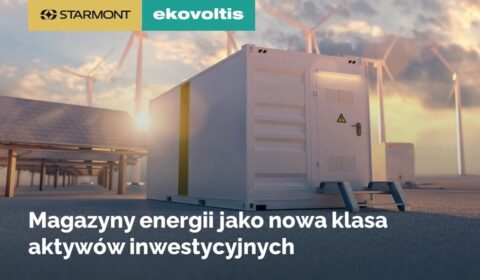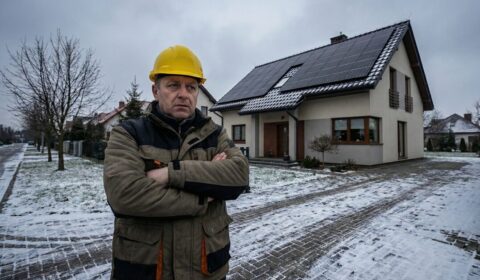Technologie przyszłości wg Billa Gatesa
High quality global journalism requires investment. Please share this article with others using the link below, do not cut & paste the article. See our Ts&Cs and Copyright Policy for more detail. Email ftsales.support@ft.com to buy additional rights. http://www.ft.com/cms/s/0/b176baa6-1bf1-11e5-a130-2e7db721f996.html#ixzz3eRRN2Dqo
 ©FT graphic
©FT graphicT
he inventors believe they are on the verge of what they call the “Wright brothers” moment for nuclear fusion power. If they are right, the potential for cleaner, more efficient energy is immense.
When Britain’s Royal Society opens the door next week to its summer science exhibition, the country’s leading showcase for new research, one of the exhibitors will demonstrate a prototype nuclear fusion reactor and proclaim that within a decade it will make electricity from fusion — the reaction that powers the sun and stars. Most observers have previously estimated that such a shift was at least 20 years away.
The bold ambition of start-up Tokamak Energy, a spin-off from the UK government’s Culham Laboratory, is a compelling example of how companies and academic groups are developing new forms of carbon-free energy.
This field was highlighted this week when the multi-billionaire philanthropist Bill Gates told the Financial Times he planned to double his personal investment in green technology, from nuclear and wind to batteries and synthetic photosynthesis, to $2bn over the next five years.
He is also calling for a tripling of public support for renewables research, to help fight climate change, from the present level of about $6bn a year worldwide. Some of this funding could come from diverting the money now used to subsidise the deployment of existing renewable sources (mainly solar and wind), says Mr Gates.
But Jim Watson, research director of the UK Energy Research Centre, urges caution. “Of course I am not averse to putting more money into energy research but I would have a problem about shifting public funding to research from the deployment of technologies such as solar photovoltaics [which generate electricity from sunlight] and offshore wind,” he says. “People forget how much innovation comes from the deployment itself.”
Nuclear energy has received much more government funding over the years than other low-carbon sources but, Mr Gates says, it is still “failing on cost, safety, proliferation, waste and fuel shortage”. His favoured technology for the future, in which he has invested heavily, is the travelling wave reactor .
Gates to double investment in renewable energy projects

Bill Gates is planning to double his personal investment in innovative green technologies to $2bn over the next five years in an attempt to “bend the curve” in combating climate change
The TWR is a “fast reactor” loaded with depleted nuclear waste at the beginning of its life which then breeds and burns its own fuel over a period of decades. “The big advantage of the TWR is that you have a lifetime of fuel within the reactor,” says Paul Howarth, managing director of Britain’s National Nuclear Laboratory. “But it would be a big and expensive reactor.”
The prototype fusion reactor being shown in London next week is a miniature version of the doughnut-shaped “tokamak” design adopted for the ITER fusion megaproject in France, whose costs are rising towards $20bn. “Compact fusion power is no longer just a pipe dream,” says David Kingham, Tokamak chief executive. “We are aiming for that ‘Wright Brothers’ moment of take-off for fusion energy within 10 years.”
Other innovative low-carbon energy projects are also poised to take off. Some sound super-speculative, like tapping the winds of the jetstream. Some are more mainstream, like building better batteries to power electric cars and store the output of intermittent renewables. Some have a romantic ring, like artificial leaves to collect carbon emissions.
Most will crash but prospects for a successful fight against climate change will be enhanced if just a few soar away, fuelled by funding from Mr Gates and other investors, public and private.
**

Photosynthesis in plants converts sunlight, water and carbon dioxide into organic chemicals with extraordinary efficiency. Chemists are mimicking this reaction with synthetic catalysts that do a similar job to chlorophyll, aiming to make fuels and materials that could replace those produced from coal, oil and natural gas.
The most important product would be hydrocarbons that could power motor vehicles instead of petrol and diesel. A simpler one would be hydrogen from splitting water; more complex compounds could replace those made from petrochemicals.
Laboratory work is still at an early stage, as scientists experiment with various materials to make the surface catalysts and fuel collecting structures of a synthetic leaf.
Among renewable energy sources, the technology is competing with biofuels made by processing plant biomass or by growing algae and other microbial cells in cultures, processes that have not advanced as fast as their proponents had hoped.
Who is developing it? Labs around the world. The Joint Center for Artificial Photosynthesis led by Caltech and funded with a $122m US government grant is the biggest programme
Date of commercialisation: 2030 to produce transport fuel in significant volumes

Wind power is, together with solar, one of the big two renewable energy sources. But ground-based turbines are expensive, visually intrusive and erratic electricity producers; on a calm day their inactivity has to be made up by other generators on standby.
The solution, espoused by several start-up ventures, is to rise high into the sky where the wind is stronger and much more dependable.
Various small-scale prototypes have been tested, using tethered kites; some designs generate electricity aloft and transmit the power to earth through
their cables, others use the movements of their tethers to generate power on the ground.
The most ambitious idea is to tap the ferocious force of the jetstream, which can blow at 200kph or more at an altitude of 10km.
But the more immediate prospect is for generating kites to fly just a few hundred metres up, where there is usually plenty of wind and the technical challenge is less formidable than flying in space occupied by commercial aircraft.
Who is developing it? Private companies in Europe and North America, including Makani (owned by Google), Altaeros Energies, LTA Windpower, EnerKite, Kitenergy, Sky WindPower and Airborne Wind Energy Labs. Some university work too
Date of commercialisation: 2030
**

Nuclear power — splitting heavy atoms through fission or combining light ones through fusion — offers carbon-free energy on a large scale.
Yet politicians and the public seem to have lost faith in the technology underlying the current generation of fission-based reactors which they see as a costly and risky legacy of the 20th century.
Many alternative fission reactor designs are under development. Some are miniaturised, to reduce the huge investment required to build a new nuclear power station; others use “fast reactor” technology to burn fuel more efficiently, without generating so much radioactive waste.
At least two private sector projects are under way to develop fusion reactors, which would tap the nuclear process
that powers the sun. But they face formidable engineering challenges, as well as sceptics who say that since the 1950s commercial fusion power has always lain tantalisingly half a century in the future.
Who is developing it? An intergovernmental partnership is building a $19bn fusion reactor, ITER, in France; the US’s Lockheed Martin and Tokamak Energy, a UK start-up, are creating commercial fusion reactors
Date of commercialisation: Radically new fission technology 2035, fusion 2045
**

The mobile world, from electric cars to smartphones, is growing impatient for a longer-lasting, faster-charging battery with greater storage than lithium-ion (Li-ion) — today’s best all-round technology. Compared with other electronic components, Li-ion has improved at a snail’s pace since its introduction in 1991.
Wind and solar power would win over many critics and gain a larger share of the energy market if their output could be stored efficiently in large static batteries, to be released when the weather is calm and the sun not shining.
Researchers have come up with several candidates to replace Li-ion but no frontrunner has emerged.
Lithium, the world’s lightest metal, remains a popular ingredient, with lithium-oxygen and lithium-sulphur batteries showing good results in lab tests. Magnesium-ion is another option.
A more radical option is to replace the battery, which stores energy through reversible chemical reactions, with a capacitor, which stores it in an electric field.
Who is developing it? University research teams and government labs, with particular expertise in the US — Argonne and Berkeley National Laboratories; car and battery makers from Tesla to QuantumScape
Date of commercialisation : 2025 for a battery better than Li-ion
Mr Gates, the founder of Microsoft, said “great innovation” was still needed to make energy in a way that would reduce carbon dioxide emissions significantly.
And this would only be achieved if governments spent tens of billions of dollars on research and development into new renewables, he said.
“Because there’s so much uncertainty and there are so many different paths, it should be like the Manhattan Project and the Apollo Project in the sense that the government should put in a serious amount of R&D,” he told the FT.
The Manhattan Project was the US research programme that led to the creation of the first nuclear bombs. It ultimately employed 130,000 people and cost more than $23bn in today’s prices.
But Mr Gates also suggested savvy private investors stood to make a fortune in the renewable industry in much the same way as those who picked the right firms at the dawn of the computer age.
“If I came and talked to you about software in the late 1970s, I would tell you: ‘Hey, somebody’s going to make a lot of money’. Now there’s a tonne of software companies whose names will never be remembered.… If you happened to pick Microsoft, Apple or Google, you would have made lots of money,” he said.
Mr Gates highlighted several areas of research that could prove promising, including technologies that would harness the power of the wind at altitudes of about 20,000 feet.
These could involve kites, kite-balloon hybrids known as kytoons or flying turbines capable of harnessing the energy of the jet stream.
“Capturing that energy is very difficult. It’s classic capitalism. There’s some wild-eyed companies, but it’s great. I wish governments would help those guys out because there’s a 10 per cent chance it’s the magic solution,” he said.
Another nascent technology to attract his attention is “solar chemical”, a kind of artificial photosynthesis that could be used to create hydrogen for fuel.
And Mr Gates has invested several hundred million dollar in “nuclear recycling”, which sees reactors powered by waste uranium from existing power plants as well as their own waste.
“Nuclear technology today is failing on cost, safety, proliferation, waste and fuel shortage, and so any technology that comes in has to have some answer to all of those things,” he said.





























































